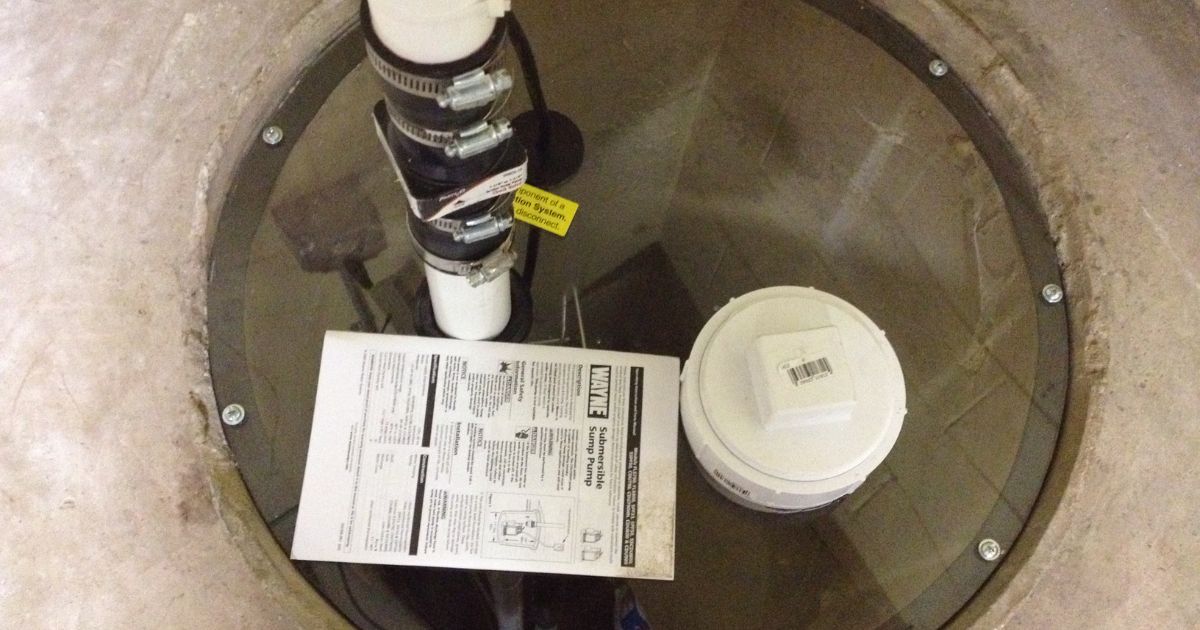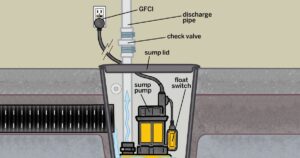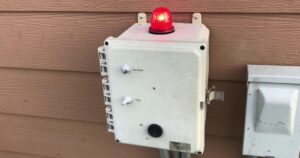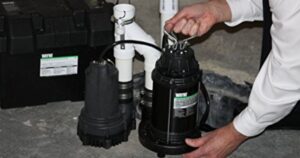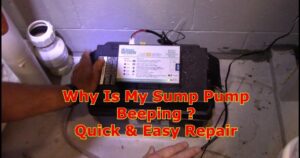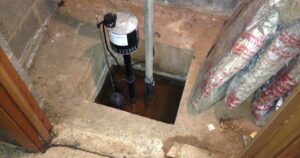In today’s world, ensuring the safety and well-being of our homes has become paramount. One crucial aspect of this is testing the sump pump with a radon system. By doing so, we can guarantee the effective removal of radon gas, a silent threat that can have severe health implications. In this article, we will delve into the technicalities and importance of testing the sump pump, equipping you with the knowledge and tools needed to safeguard your home and loved ones.
Key Takeaways
- Regular testing and maintenance of the sump pump with the radon system are essential for ensuring a safe and healthy living environment.
- Gathering the necessary tools and preparing the sump pump for testing is crucial to accurately evaluate its functionality.
- Conducting a visual inspection and testing the sump pump’s functionality is important for identifying potential issues and ensuring proper operation.
- Checking for proper radon system operation and interpreting the test results accurately, as well as addressing concerns like ‘is sump pump smell toxic?‘, is necessary to determine the effectiveness of radon reduction.
Understanding the Importance of Testing
Testing the sump pump with the radon system is essential for ensuring its efficacy and maintaining a safe and healthy environment. Sump pumps are designed to remove excess water from basements or crawl spaces, preventing flooding and water damage.
When radon is present in the soil, it can seep into these areas and contaminate the indoor air, posing a serious health risk. By testing the sump pump with the radon system, homeowners can determine if the system is effectively reducing radon levels.
This involves measuring radon levels before and after the sump pump operates, ensuring that it is effectively removing radon from the soil. Regular testing is crucial to identify any malfunctions or inefficiencies in the system, allowing for timely repairs and maintenance to maintain a safe and healthy living environment.
Gathering the Necessary Tools
To properly evaluate the effectiveness of the sump pump with the radon system, it is important to gather the necessary tools. These tools will enable you to accurately measure and assess the performance of the system. The first essential tool is a radon test kit, which will help determine the radon levels in your home. This kit typically includes a radon detector, an instruction manual, and a laboratory analysis form.
You will need a water level sensor to measure the water level in the sump pit, as well as a voltmeter to check the power supply to the sump pump. A flashlight will also be useful for inspecting the sump pump and associated components. By having these tools on hand, you can conduct a thorough evaluation of your sump pump with the radon system, ensuring its effectiveness in mitigating radon gas.
Preparing the Sump Pump for Testing

To prepare the sump pump for evaluation, it is crucial to ensure its proper functioning and readiness for testing. Begin by inspecting the pump for any visible damage or signs of wear. Check the power supply and ensure that it is securely connected. Test the pump’s operation by pouring water into the sump pit and observing if the pump activates and effectively pumps out the water.
Verify that the check valve is functioning correctly by ensuring that water does not flow back into the pit after the pump shuts off. Additionally, check the discharge pipe for any clogs or obstructions that may impede the pump’s performance. By thoroughly examining and testing these components, you can ensure that the sump pump is in optimal condition for accurate evaluation.
Conducting a Visual Inspection
After ensuring the sump pump’s proper functioning and readiness for testing in the previous subtopic, the next step is to conduct a visual inspection. A visual inspection allows you to visually assess the condition of the sump pump and its components. Start by examining the sump pump basin for any signs of damage or cracks.
Check the float switch to ensure it moves freely and is not obstructed by debris. Inspect the discharge pipe for any leaks or blockages. Inspect the power cord and connections for any signs of wear or damage. A thorough visual inspection will help identify any potential issues that may affect the functionality of the sump pump. Once the visual inspection is complete, you can proceed to testing the sump pump’s functionality.
Testing the Sump Pump’s Functionality

To accurately assess the functionality of the sump pump, it is essential to conduct a thorough and precise test. Start by pouring water into the sump pit until the pump activates. Observe the pump as it removes water from the pit and ensure that it is functioning properly. Listen for any unusual noises, such as grinding or squeaking, which may indicate a mechanical issue.
Check for any leaks or signs of water damage around the pump. Test the float switch by manually lifting it to activate the pump and make sure it shuts off when the water level decreases. Finally, verify that the discharge pipe is properly connected and that water is being expelled away from the foundation. Once the sump pump has been tested and deemed operational, it is then important to move on to checking for proper radon system operation.
Checking for Proper Radon System Operation
To ensure the proper operation of the radon system, it is crucial to conduct a thorough inspection and testing process. Checking for proper radon system operation involves several key steps. First, visually inspect the system components, including the fan, pipes, and vents, for any signs of damage or blockage. Next, test the fan to ensure it is functioning correctly by listening for any unusual noises or vibrations.
Measure the radon levels in the home using a radon test kit or a professional radon detector. This will provide an accurate assessment of the system’s effectiveness in reducing radon levels. Finally, monitor the system regularly to ensure it continues to function properly and address any issues promptly to maintain a safe living environment.
Interpreting the Test Results
Once the radon test results are obtained, they must be carefully interpreted to determine the effectiveness of the sump pump with radon system in reducing radon levels. The test results will typically provide the radon levels in picocuries per liter (pCi/L).
It is important to compare these results to the recommended action levels set by the Environmental Protection Agency (EPA), which is 4 pCi/L. If the radon levels are below this threshold, it indicates that the sump pump with radon system is effectively reducing radon levels. However, if the radon levels exceed the recommended action levels, further steps may need to be taken to mitigate the radon levels.
This could involve adjusting the system or considering additional radon reduction measures. Proper interpretation of the test results is crucial to ensure the safety of the occupants in the building. To maintain the effectiveness of the sump pump with radon system, it is essential to regularly test and retest the system.
Maintaining and Retesting the Sump Pump

Regular maintenance and periodic retesting are essential for ensuring the continued effectiveness of the sump pump with radon system. To maintain the sump pump, it is crucial to clean the pump and pit regularly. This involves removing any debris or sediment that may have accumulated in the pit, as well as cleaning the pump itself to ensure proper functioning. It is important to check the discharge pipe for any obstructions or leaks.
Periodic retesting of the sump pump is necessary to ensure that it is still effectively reducing radon levels. This can be done by conducting a radon test in the house and monitoring the results. If the radon levels are not adequately reduced, it may be necessary to troubleshoot the sump pump or consider replacing it. By regularly maintaining and retesting the sump pump, homeowners can ensure the continued effectiveness of their radon mitigation system and protect their indoor air quality.
Frequently Asked Questions
Can I Test My Sump Pump Without Having a Radon System Installed?
Yes, you can test your sump pump without having a radon system installed. It is important to regularly test your sump pump to ensure it is functioning properly and effectively removing water from your basement or crawl space.
How Often Should I Test My Sump Pump With a Radon System?
The frequency of testing a sump pump with a radon system depends on various factors, including local regulations and manufacturer recommendations. Consulting with a professional is advised to determine the appropriate testing schedule for your specific situation.
What Are the Signs That Indicate My Sump Pump Is Not Functioning Properly?
Signs of a malfunctioning sump pump include unusual noises, failure to turn on/off, frequent cycling, water not being discharged properly, and excessive vibrations. Timely identification and repair of these issues are crucial to ensure the proper functioning of the system.
Can I Perform the Radon System Test Myself or Should I Hire a Professional?
Performing a radon system test requires technical knowledge and specialized equipment. It is recommended to hire a professional to ensure accurate results and compliance with regulations. DIY testing may lead to inaccurate readings and potential health risks.
Are There Any Specific Safety Precautions I Should Take While Testing My Sump Pump With a Radon System?
When testing a sump pump with a radon system, it is crucial to prioritize safety. Precautions may include wearing protective gear, ensuring proper ventilation, and consulting with a professional to minimize potential risks.
Conclusion
In conclusion, testing the sump pump with a radon system is crucial to ensure its functionality and the proper operation of the radon system. By conducting a visual inspection, testing the pump’s functionality, and checking for proper radon system operation, homeowners can identify any issues and take necessary steps to maintain a safe environment. For example, a case study found that a malfunctioning sump pump led to elevated radon levels in a home, posing a significant health risk to the occupants.
